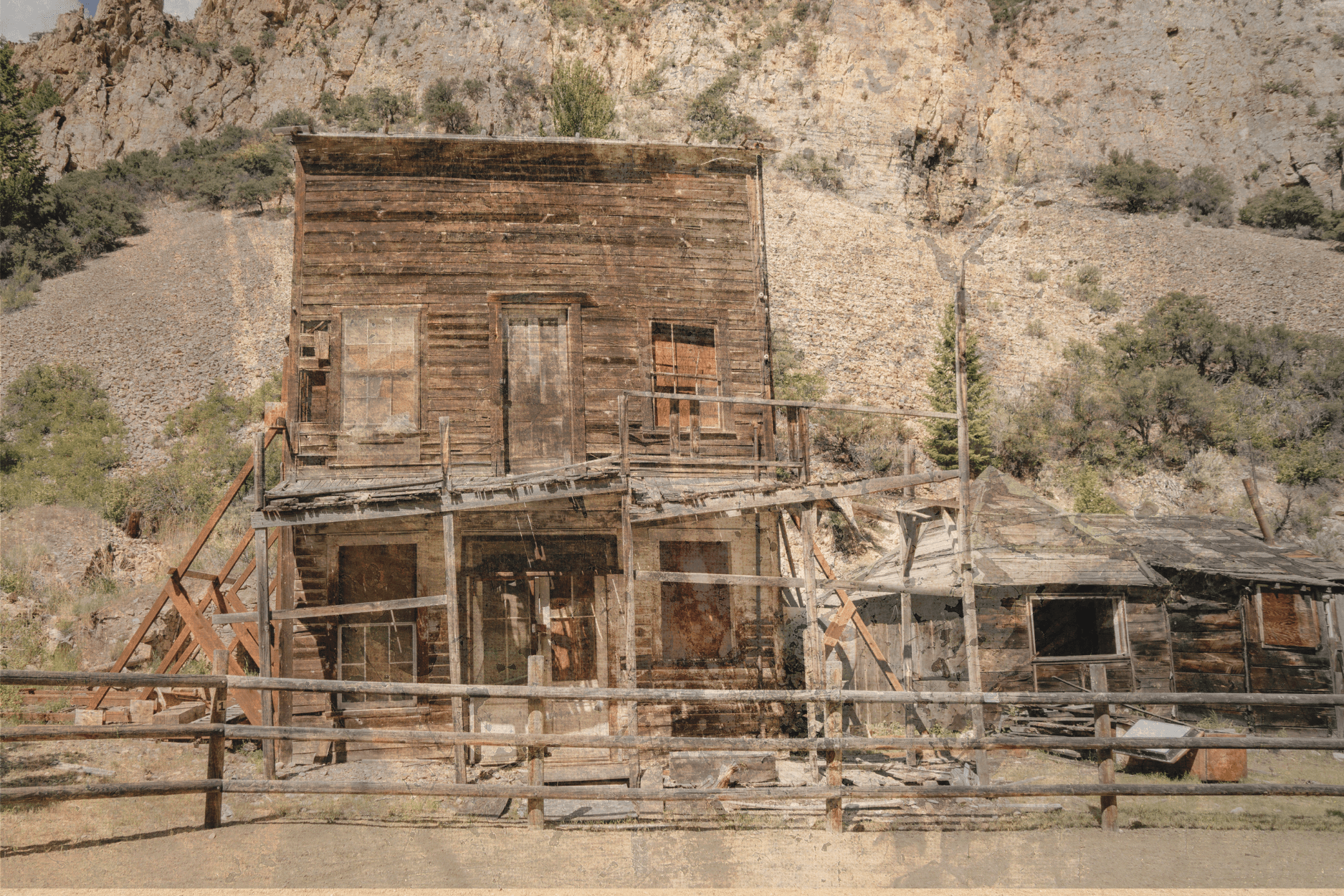8 local legends of New England that will make you smile (and maybe raise an eyebrow)

While the most famous legends might get a lot of the coverage, discovering rarer local legends from all corners of the globe, offers us more unique insight into the history and beliefs that helped shape our world today.
So as part of my exploration around obscure New England folklore. i found these 8 lesser-known legends featuring a feast of characters from highwaymen to ghost ships.
Enjoy!
Published: 8th Nov 2024
Author: Mythfolks
1. Captain Lightfoot, the Last Highwayman
Michael Martin, known as Captain Lightfoot, earned a name for himself as a bold highwayman in Ireland. After a close call with the law in 1819, he fled to America, landing in Salem and briefly attempting a quiet life as a farmhand.
But Martin couldn’t ignore his true nature, so he returned to the open road, traveling to Canada before making his way through Vermont and New Hampshire, robbing travelers with great success.
In time, he settled in Boston, where he set his sights on a new target: Major John Bray. Martin learned that Major Bray would attend a dinner party hosted by Governor Brooks in Medford.
Seizing the opportunity, he lay in wait along the Medford turnpike. When Bray’s carriage appeared, Martin leapt out with his gun, blocking the road and forcing Bray to surrender his valuables.
Martin vanished into the night, but Bray quickly raised the alarm, sparking a hot pursuit. Authorities tracked Martin for over a hundred miles, finally capturing him in Springfield, exhausted and asleep.
They hauled him to East Cambridge Jail and there followed a high-profile trial that captivated onlookers, keen to see the notorious apprentice of Thunderbolt, one of Ireland's feared highwaymen.
Despite receiving a death sentence, Martin remained defiant, even attempting escape. He loosened his chains, overpowered a guard and almost made it past the iron gate, but the alarm was raised, and he was swiftly recaptured.
He met his end on the scaffold with the same courage that marked his life, concluding the wild legacy of the last of the highwaymen.

2. The Old Witch and the Bobsled
Tuggie Bannocks, an elderly former slave living near Gilbert Stuart’s mill in Narragansett, Rhode Island, was believed to be a witch by locals.
Though she practiced various charms and rituals, she seemed more fearful and superstitious than powerful. She once thought she saw the Devil when she stumbled upon a sick sheep dressed in old clothes and when she realized it was a prank, she retaliated by dancing on the owner’s roof and sending soot down his chimney!
Tuggie was known for her odd behavior and she was rarely disturbed, except by neighbors hiring her for day work.
One winter evening, Tuggie was brewing a spell to give a "troublesome tinker" rheumatism. Her pot boiled with an odd mix of items, including graveyard earth, rusty nails and a rabbit's foot.
As she chanted, a loud rush came at her door, which burst open as a heavy force barreled through, knocking her to the ground.
Believing it was a supernatural attack, Tuggie lay trembling, promising to abandon witchcraft and muttering prayers. She felt a tug on her ankle before the intruder left, vanishing into the night.
Unknown to Tuggie, the “fiend” was a runaway bobsled ridden by four boys who lost control of it on an icy hill. They'd watched as it crashed into her kitchen and, seeing her terrified reaction, sneaked in to retrieve the sled - one of them giving her ankle a quick tug as a final prank before they disappeared into the night!

3. The Legend of Dungeon’s Rock
In 1658, a small ship appeared on the Saugus River, Massachusetts, bringing pirates who quietly disappeared into the nearby woods.
They built a hidden camp and it was believed they buried treasure nearby.
Later, three of the pirates were captured and taken back to England, where they were executed for piracy, but one pirate, Thomas Veale, managed to escape.
Veale hid in a cave in the woods, a spot previously used to stash their loot, known as Dungeon Rock.
Veale lived in secrecy for some time, but a powerful earthquake eventually struck, sealing him inside the cave along with any hidden treasure.
The site - with rumors of treasure locked within - naturally became the subject of local legend pretty quickly.
Over a century later, Hiram Marble, apparently driven by spiritual messages, began digging into the rock to find the treasure.
He and his son dedicated nearly forty years to the search, but they never found anything.
Their efforts left a deep shaft in Dungeon Rock and the legend of the hidden pirate treasure continues to draw visitors to this day.

4. The Hidden Treasure of Ipswich
In Ipswich, Massachusetts, a man had the same vivid dream for three nights, seeing a hidden treasure buried in a particular spot. The dream weighed heavily on his mind and he eventually decided to see if it held any truth.
Late one night, he set off with a lantern, a spade and his Bible, determined to uncover the treasure. Reaching the location from his dream, he recognized it instantly and began urgently digging.
After some time, his spade struck a stone, revealing an iron bar lying across it. Just as he was about to move the bar, he realized he was surrounded by a group of cats, their eyes glowing in the dark.
Feeling a chill, he swung the iron bar and shouted, causing the cats to vanish. Relieved but unnerved, he continued to dig, finding himself knee-deep in cold water.
Suddenly, the ground gave way and he tumbled into the hole, managing to avoid serious injury but ending up soaked and rattled.
Disheartened, he returned home with nothing but the iron bar, which he later fashioned into a door latch.
It served as a memento of his strange adventure and as a reminder of a treasure that never fully revealed itself.
Who knows if that treasure ever really existed - but maybe it's still there?

5. The Stone Throwing Demon
This Portsmouth, New Hampshire legend is from 1692 and started with a series of weird and terrifying events following a dispute that local resident George Walton had with an elderly woman, rumored to be a witch.
After taking land from her, Walton and his family faced relentless harassment (perhaps justly!).
One night in June, their house was pelted with stones thrown with such force that they feared the building would collapse. Rushing outside, they found no one, but the stones continued flying, shattering windows and even entering through the chimney, seemingly hurled from nowhere. The stone attacks lasted for hours.
The disturbances didn’t end with the stone throwing. Items began moving on their own and several guests in Walton's home witnessed objects being thrown or twisted by unseen forces. Stones they picked up would vanish, mysteriously reappearing later.
Walton sought the help of a minister to rid his home of the supposed curse, but even after multiple attempts, the strange activity persisted.
One of the most unsettling occurrences was hay being twisted into knots and kettles being tossed across the room by an invisible force, leaving Walton’s family both baffled and terrified.
Despite attempts to find a rational explanation, the events at Walton’s home remained a mystery. Some believed the strange occurrences were supernatural, while others suspected human interference.

6. The Tragic Bride of the Merrimack
Winnepurkit, a young leader of the Saugus people known for his courage, married the daughter* of Passaconaway, a respected chief and healer of the Merrimack Valley tribes.
Over time, the young bride* began to miss her father and her homeland. Winnepurkit arranged for her safe visit back to her family, but when she wished to return to her husband, Passaconaway insisted that she be escorted by her own people.
Winnepurkit, feeling that his authority was being questioned, refused to send an escort, viewing it as a slight on his ability to protect her.
This disagreement, fueled by each man’s pride and traditions, left the young woman* caught between her father’s wishes and her husband’s honor, unable to bridge the growing divide.
Driven by love and courage, she decided to return to Winnepurkit on her own, launching a small canoe onto the Merrimack River.
Tragically, the river’s powerful current proved too much, and her empty canoe was found drifting later.
This story echoes an equally tragic tale told as a ghost legend, where the bride in question goes on a quest to find her fiancé who has betrayed her.
*Recorded in the 19th century and a sign of the times, the “young woman” isn’t given a name!

7. The Legend of Squaw Rock
Squam Lake in New Hampshire, originally known as Wonneasquamauke meaning “beautifully surrounded place of water,” is located in the White Mountains.
One bay on the lake was once called Squaw Cove, named for a block of granite on the shore that resembled a woman.
This stone, later destroyed, became part of a tragic tale involving Waunega, an elderly man who wished to marry Suneta, a young woman already in love with another, Anonis. Despite her feelings, Suneta was given in marriage to Waunega by her father, and a feast was held for the union.
On their wedding night, as Waunega slept, Anonis secretly entered and urged Suneta to run away with him. Though worried about angering the Great Spirit, she agreed, and they tried to escape across the lake by canoe.
Waunega awoke just as they were leaving, and, in a fit of rage, he took his bow and shot an arrow at them. The arrow struck Anonis, who fell into the lake, overturning the canoe and leaving Suneta stranded on the shore, heartbroken.
Waunega called on the Great Spirit to punish Suneta for her betrayal. A flash of lightning and a thunderous roar filled the sky, and Waunega, stumbled and fell.
When he awoke the next morning, he saw a rock resembling a woman near the lake, a lasting monument to the tale and a symbol of punishment and loss, which became known as Squaw Rock.

8. The Ghost Ship Palatine
In the late 1700s, an emigrant ship called the "Palatine" sailed for Philadelphia. It carried Dutch families who were looking to start a new life in America.
They had brought all their belongings with them, but the journey took a grim turn. Bad winter weather kept pushing the ship away from the coast and with the captain dead - some said from illness, others whispered murder - things quickly spiraled out of control.
The crew turned on the passengers, demanding outrageous sums just for food or water. Those who couldn’t pay were thrown into the freezing sea.
Eventually, the ship drifted onto the reef at Block Island. Wreckers, locals who scavenged shipwrecks, saved most of those who were still alive - except for one woman who had lost her mind.
But before they could get the ship safely to shore, a strong wind came up, and in their desperation to claim the wreck, the wreckers set the ship on fire.
The "Palatine," engulfed in flames, drifted out into the stormy sea, the screams of the forgotten woman echoing into the night. The ship eventually burned down and vanished beneath the waves.
But that wasn't the end. Every year, on the anniversary of the tragic event, people on Block Island would see the glowing outline of the "Palatine," still burning as it drifted past, replaying its final moments.
The islanders, skeptical of scientific explanations, insisted they knew what they were seeing - a ghost ship, repeating its sad story year after year, forever cursed to haunt the waters where it met its end.

These legends of New England offer a brief insight into some of the themes that were prevalent in and around the birth of the US, and this part of the country.
The ocean plays a big role in its history, with tales of pirates and plundering, ghost ships and treasure very common across all 6 states. The local indigenous cultures too played a big role in the passing on and evolution of early legends, many of which are being lost as time goes on. But the more we retell and share these stories, the more chance we have to keep history alive.
If you are native to New England and have any insider, additional old and obscure legends from New England to share, feel free to say hello@mythfolks.com - i'd love to hear from you and add them to this article!
Article sources
- Emerson, N. S. Dungeon Rock; or, The Pirate's Cave, at Lynn. Boston: C. M. A. Twitchell, Printer, 2023.
- Skinner, Charles M. American Myths & Legends. Vol. 1. Philadelphia: J.B. Lippincott Co., 1903.
- Drake, Samuel Adams. A Book of New England Legends and Folk Lore. New and revised edition. Boston: Little, Brown, and Company, 1901.
- Gomez-Galisteo, M. Carmen. "Beware! This is a Ghost-Free Ghost Story: Revisiting the New England Folklore in Remember Me by Mary Higgins Clark." Contemporary Legend n.s. 9 (2006): 53-68.
Explore more New England folklore
Explore more US folklore
11 US ghost towns that are actually haunted
Maybe...if you like escaping the crowds, these towns are not only abandoned but largely unvisited by tourists. Check them out.





